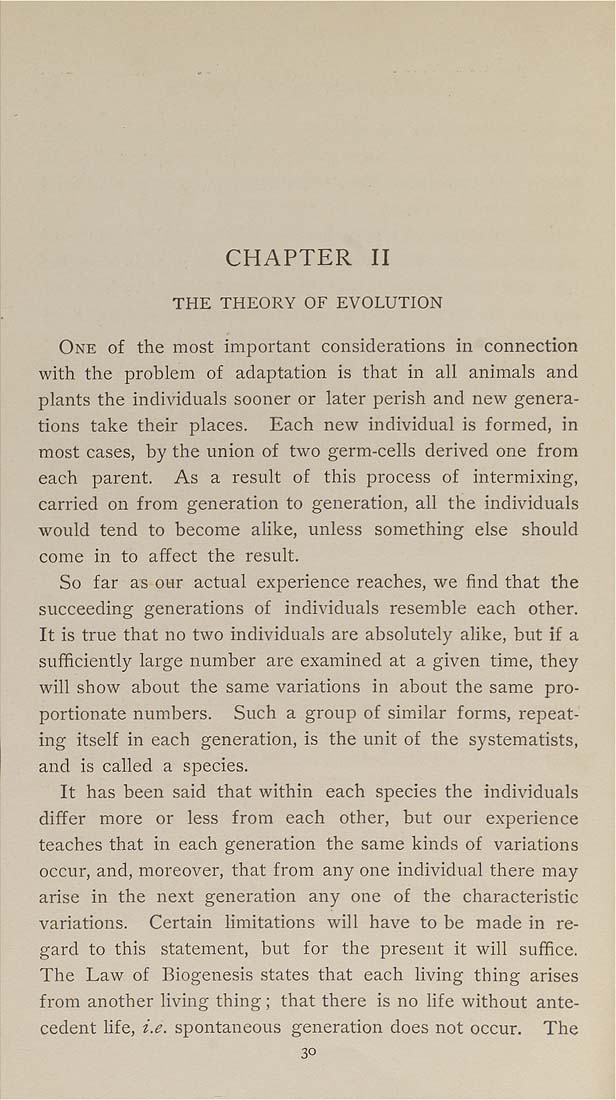CHAPTER II
THE THEORY OF EVOLUTION
One of the most important considerations in connection
with the problem of adaptation is that in all animals and
plants the individuals sooner or later perish and new genera¬
tions take their places. Each new individual is formed, in
most cases, by the union of two germ-cells derived one from
each parent. As a result of this process of intermixing,
carried on from generation to generation, all the individuals
would tend to become alike, unless something else should
come in to affect the result.
So far as our actual experience reaches, we find that the
succeeding generations of individuals resemble each other.
It is true that no two individuals are absolutely aHke, but if a
sufficiently large number are examined at a given time, they
will show about the same variations in about the same pro¬
portionate numbers. Such a group of similar forms, repeat¬
ing itself in each generation, is the unit of the systematists,
and is called a species.
It has been said that within each species the individuals
differ more or less from each other, but our experience
teaches that in each generation the same kinds of variations
occur, and, moreover, that from any one individual there may
arise in the next generation any one of the characteristic
variations. Certain limitations will have to be made in re¬
gard to this statement, but for the present it will suffice,
The Law of Biogenesis states that each living thing arises
from another living thing; that there is no life without ante¬
cedent life, i.e. spontaneous generation does not occur. The
30
|








